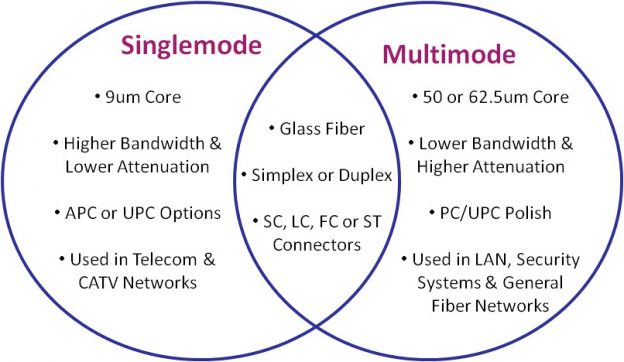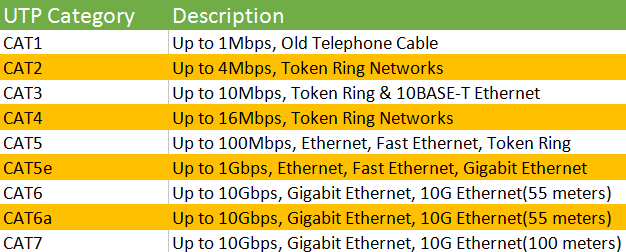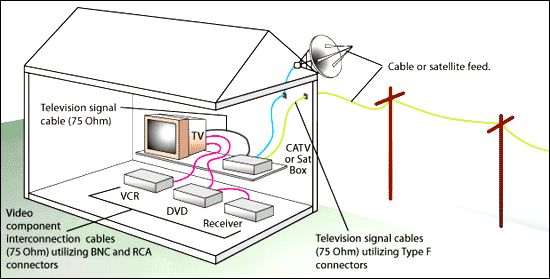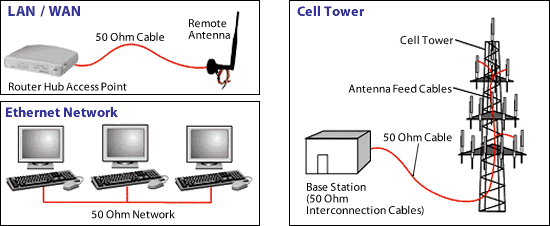What Are Fiber Optic Cable, Twisted Pair Cable and Coaxial Cable?
In a communication system, a wire or cable is usually used to connect transmitting and receiving devices. Currently in the market, there are mainly three types of cables deployed in communication systems, which are fiber optic cables, twisted pair cables and coaxial cables. Each type has been widely utilized and applied in different applications. What are they? How much do you know about them? And what's the difference between these three kinds of cables? This article will give you the answers.
Computing and data communications are fast-developing technologies. To meet the transmission of ever-increasing data rates, there comes a new generation of transmission medium, which is fiber optic cable. Fiber optic cable transmits information using beams of light at light speed rather than pulses of electricity. It refers to the complete assembly of optical fiber. A fiber optic cable can contain one or more strands of optical fiber to transmit data. Each strand of optical fiber is individually coated by plastic layers and contained in a protective tube. Fiber optic cable transmits data as pulses of light go through tiny tubes of glass, the transmission capacity of which is 26,000 times higher than that of twisted-pair cable. When comparing with coaxial cables, fiber optic cables are lighter and more reliable for transmitting data.
Two widely used types of fiber optic cables are single-mode fiber optic cables and multimode fiber optic cables. A single-mode optical fiber has a small core, and only allows one mode of light to propagate at a time. It is generally adapted to high speed and long-distance applications. A multimode optical fiber has a larger core diameter than a single-mode optical fiber and it is designed to carry multiple light rays, or modes at the same time. It is mostly used for communication over short distances because of its high capacity and reliability, serving as a backbone applications in buildings. And there are many connector types for fiber optic cable, such as LC, SC, ST or FC connector. You can choose fiber optic cables terminated at both ends with the same or different connector types to connect different devices, like LC SC fiber patch cable, LC to LC fiber patch cable. There are both single-mode and multimode, and simplx and duplex fiber optic patch cables for your options, such as LC to LC multimode duplex fiber optic patch cable, LC to SC duplex single-mode fiber optic patch cable, or LC LC multimode fiber patch cord.

Twisted pair cable consists of a pair of insulated wires twisted together, which has been adapted in the field of telecommunication for a long time. With the cable twisting together, it helps to reduce noise from outside sources and crosstalk on multi-pair cables. Basically, twisted pair cable can be divided into two types: unshielded twisted-pair (UTP) cable and shielded twisted-pair (STP) cable. UTP cable, such as data communication cables and normal telephone cables, serves as the most commonly used cable type with merely two insulated wires twisted together. STP cable distinguishes itself from UTP cable in that it includes a foil jacket which helps to prevent crosstalk and noise from outside source. STP cable is typically used to eliminate inductive and capacitive coupling, and it can be applied between equipment, racks and buildings. The table below shows several different types of twisted pair cables.

Coaxial cable is a type of high-frequency transmission cable which contains a single solid-copper core. A coaxial cable has over 80 times the transmission capability of the twisted-pair cable. Coaxial cables are commonly used to deliver television signals and to connect computers in a network as well. There are mainly two kinds of coaxial cables: 75 Ohm coaxial cable and 50 Ohm coaxial cable.
The primary use of 75 Ohm coaxial cables is to transmit video signals. One typical application of 75 Ohm coaxial cable is to transmit television signals over cable, which is why sometimes it is called signal feed cables. The most common connector type used in this application is a Type F. Another application is video signals between components, such as DVD players, VCRs or receivers commonly known as audio/video (A/V) cables. In this case, BNC and RCA connectors are often found. In both applications, RG59 with both solid center conductor (RG59B/U) and stranded center conductor (RG59A/U) as well as RG6 are common choices.

The primary use of 50 Ohm coaxial cables is the transmission of data signals in a two-way communication system. Several common applications for 50 Ohm coaxial cables are computer ethernet backbones, wireless antenna feed cables, GPS (Global Positioning Satellite) antenna feed cables and cell phone systems.

As we know, the technology in the field of communication networks is developing rapidly. All these three kinds of cables have their special applications. Twisted pair cable has been adapted in the field of telecommunication for a long time. Coaxial cables are commonly used to deliver television signals and to connect computers in a network. And fiber optic cable is a new generation of transmission medium. Before making a decision, you need to know more about them, which can help you make a better choice.

